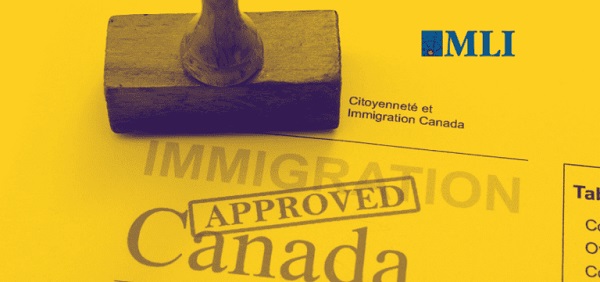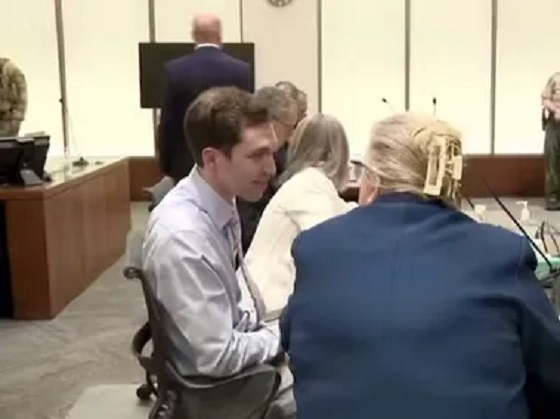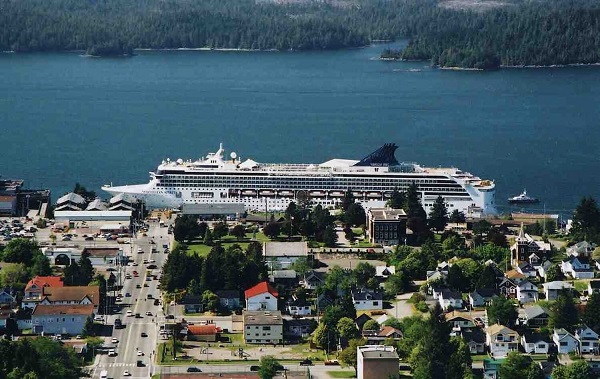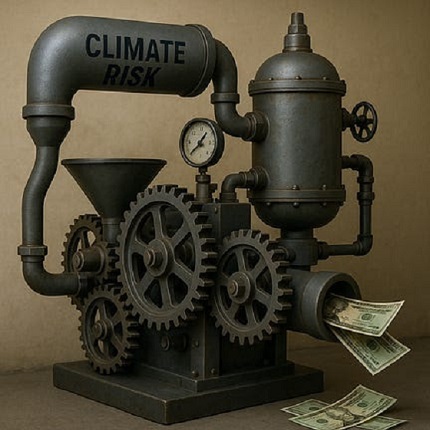Economy
Federal mismanagement to blame for Canada’s immigration backlash

From the Macdonald Laurier Institute
By Sonia Orlu for Inside Policy
Canada’s welcoming attitude towards newcomers makes it one of the most sought-after places to live in the world. However, this image is being tested by a growing backlash against immigration. Immigrants make up 23 per cent of the population, yet economic, social, and cultural anxieties are increasingly challenging the country’s commitment to diversity. More than four-in-ten Canadians now agree – either strongly (23 per cent) or somewhat (21 per cent) – with the statement, “There is too much immigration to Canada.” It is crucial to understand that this backlash is not rooted in opposition to immigration or immigrants themselves, but rather in frustration over mismanagement and inadequate planning by the federal government. It reflects a growing unease about the country’s economic outlook, raising urgent questions about how Canada can uphold its values while addressing legitimate and pressing concerns.
Public reactions and political responses
Canadian political leaders have generally maintained a measured tone on immigration, focusing on economic pressures and service delivery rather than hostility toward immigrants. However, tensions are rising, and a thoughtful debate is increasingly needed.
Prime Minister Justin Trudeau has accused the Conservative Party of spreading misinformation to stoke fears about immigration. Such remarks risk alienating those with legitimate critiques of his administration’s policies and practices. Conservative Leader Pierre Poilievre has linked immigration to housing shortages, criticizing Trudeau’s policies as disconnected from infrastructure needs. This aligns with public frustrations over housing availability and the need for better coordination between immigration levels and capacity. Quebec Premier François Legault echoed similar sentiments, raising issues of resource management and culture. His critics accuse him of xenophobia, but dismissive responses like Immigration Minister Marc Miller’s remark that people are “always blaming immigrants” overlook genuine challenges and deepen frustration.
These exchanges illustrate the delicate balance required in navigating immigration policy and public sentiment. Canadians’ attitudes toward immigration are more nuanced than a simple pro- or anti-immigration divide. Most Canadians aren’t driven by fear or racism; rather, they are focused on how immigration impacts housing affordability, strains public finances, and increases job competition. While apprehension about immigration levels is growing, attitudes toward immigrants themselves remain largely positive. In fact, more than four-in-ten Canadians (42 per cent) say that immigrants make their community a better place, with fewer than one-in-ten (9 per cent) feeling that they make it worse. Still, public concerns must be addressed to prevent further polarization.
The housing crisis: a catalyst for frustration
A significant driver of the immigration backlash is the housing crisis. The Canada Mortgage and Housing Corporation (CMHC) reported in 2024 that Canada needs an additional 3.5 million housing units by 2030 to restore affordability. Cities like Toronto and Vancouver have seen housing prices soar, partly due to increased demand from population growth.
The “housing theory of everything” highlights how housing affects multiple societal issues – such as economic inequality, social mobility, and political polarization. Immigration is no exception. Housing shortages drive up costs, deepen inequality, and create competition between immigrants and long-term residents, eroding social trust and cohesion.
The rise in temporary residents, including international students and temporary foreign workers, compounds these issues. Immigration, Refugees and Citizenship Canada (IRCC) reports that the number of temporary residents increased by over 50 per cent from 2017 to 2022 and continued to rise sharply into 2024. This influx contributes to increased demand in the rental housing market, particularly in urban centres with large universities, driving up prices and reducing availability.
The Trudeau government’s ambitious plan to admit nearly 500,000 new permanent residents annually by 2026 marks one of the highest per-capita immigration rates globally. By comparison, Canada admitted around 200,000 landed immigrants per year in the 1990s and 250,000 per year in the early 2010s. Without matching investments in infrastructure and housing, these elevated immigration levels – often referred to as “mass immigration” – could exacerbate housing shortages, strain public services, and heighten public frustration. Internal documents from Immigration, Refugees, and Citizenship Canada revealed that as early as 2022, officials warned that large increases in immigration could worsen housing affordability and strain public services. Yet, no substantive steps were taken by the government to revise its targets.
Given the realistic timelines for development, it is improbable that infrastructure can keep pace with rapid population growth. The construction industry faces labour shortages, regulatory hurdles, and lengthy timelines for project completion – often several years. The CMHC maintains that due to these complexities, expecting cities to rapidly scale up infrastructure to meet immediate demands is unrealistic.
If these housing issues are not resolved, public frustration could escalate, potentially shifting from concerns about immigration policy to resentment toward immigrants themselves.
Cultural integration: balancing diversity and cohesion
Economic challenges, such as housing affordability, often intersect with social and cultural anxieties. As communities experience rapid change and strained resources, questions arise about society’s ability to integrate newcomers without compromising its social fabric. While only about 4 per cent of Canadians express fears that immigration weakens local culture and identity, concerns about the effectiveness of integration are more widespread. In fact, approximately half of Canadians are concerned that some immigrants may not be adopting Canadian values or fully participating in the broader community. When asked which values immigrants should adopt, Canadians often prioritize language proficiency and respect for the country’s history and culture, highlighting the importance placed on cultural integration. Interestingly, both native-born and foreign-born Canadians largely agree on the values newcomers should embrace, indicating a shared vision for integration.
Canada’s sense of nationhood is deeply tied to its history of migration and its commitment to cultural and ethnic diversity. However, diversity is not inherently beneficial in all forms; its value depends on whether it leads to greater tolerance, creativity, or economic growth. When cultural and ethnic diversity is celebrated without deliberate efforts to foster interaction and promote unity, it risks becoming fragile. Poorly managed diversity can lead to social fragmentation, lower trust, and weakened civic engagement.
The challenges of integration are well-documented. Language barriers, different social norms, and unfamiliarity with Canadian institutions can make it difficult for immigrants to fully integrate. This can sometimes lead to the formation of cultural enclaves, where newcomers find comfort in communities with shared backgrounds but have limited interaction with the broader society. While these enclaves provide crucial support, they can inadvertently hinder full participation in Canadian life. Sociologist Robert Putnam found that, in the short term, diversity can reduce social capital and lower community engagement, particularly when institutions fail to promote integration – a concept he refers to as “hunkering down.” In such cases, both newcomers and long-term residents may feel isolated.
Despite these challenges, diversity, when managed effectively, can yield benefits. Exposure to different cultures fosters creativity, innovation, and economic growth, even though research suggests that immigration itself is neither inherently good nor bad for the economy. Cities like Toronto and Vancouver have thrived in part due to their multicultural populations, which have helped them become global hubs for technology and the arts. Additionally, evidence shows that successful integration is common in Canada. Many immigrants actively embrace Canadian values, contribute to the economy, and participate in civic life. The majority of eligible immigrants become Canadian citizens, demonstrating a strong commitment to their new country. Many immigrants choose Canada precisely because they align with its principles of democracy, equality, and respect for human rights. Cultural integration, in the end, is a dynamic process – one that, when approached thoughtfully, strengthens rather than weakens the social fabric.
Bridging policy failures with sustainable solutions
Addressing public frustrations with immigration requires a serious reassessment of the policies that have exacerbated these concerns.
First and foremost, tackling the housing crisis through integrated planning is essential. Governments should incentivize affordable housing development and reform zoning laws to allow for higher-density projects. Recognizing the realistic timelines for construction and development, planning must begin immediately and be synchronized with immigration targets. Public sentiment strongly supports this approach. A recent Nanos Research survey found that 72 per cent of Canadians want to reduce immigration levels until housing becomes affordable.
Aligning immigration levels with the country’s capacity is crucial. Dynamic targets based on real-time economic data and infrastructure development would ensure that immigration aligns with Canada’s ability to provide services and opportunities. Returning to historical admission levels of 200,000 to 250,000 immigrants per year could help ease pressure on housing and public services. Adjusting the composition of immigration streams is equally important.
Temporary measures – such as pausing or reducing programs for international students and temporary foreign workers – could relieve immediate pressures while infrastructure catches up. For instance, although international students contributed over $30 billion to the economy in 2022, lowering their numbers could help reduce housing demand in university towns. Likewise, managing temporary foreign worker intake would address labour shortages without overwhelming resources.
Effective integration and support services must also be given priority. This should begin with implementing consistent selective immigration measures that evaluate an applicant’s potential to integrate both economically and culturally into Canadian society. Such measures would reduce reliance on extensive post-arrival support and help ease cultural tensions. According to a 2018 Angus Reid survey, two-in-three Canadians believe that greater emphasis should be placed on screening for alignment with Canadian values. However, it’s important to note that defining “Canadian values” can be subjective and risks being perceived as discriminatory.
Improvements to post-arrival services like community centres offering language classes, job search support, and cultural orientation programs are necessary to significantly ease the transition for newcomers. Research shows that when immigrants are effectively integrated, they are more likely to find employment, increasing tax contributions and reducing their reliance on social services. Additionally, well-integrated immigrants are more likely to engage in civic life, fostering social cohesion and strengthening community resilience.
Cultural diversity, while valuable, cannot be assumed to sustain itself without active support. Integration is not just about where people live or demographic representation; it also involves cultivating a shared sense of purpose and belonging. Successful integration depends on a reciprocal relationship: immigrants need the resources and opportunities to succeed, and in turn, they must engage with and contribute to the broader societal and cultural framework. Without deliberate policies that encourage community engagement, cross-cultural dialogue, and mutual respect, there is a risk that cultural diversity will falter.
Finally, responsible political discourse is crucial. Leaders must choose their words carefully, as rhetoric shapes public perceptions. By fostering nuanced and empathetic dialogue, they can bridge the gap between public concerns and policy realities, preserving national unity.
Canada stands at a crossroads. While immigration has long been one of our greatest assets, the current backlash highlights cracks in its management. This is not a rejection of immigrants – it’s a call for better policies and improved management. High immigration levels without careful planning will continue to harm our society. Our leaders now face a choice: fan the flames of division or unite the country around meaningful, evidence-based solutions.
Sonia Orlu is a Ph.D. student in Political Science at Simon Fraser University and a commentator on politics and culture. She is a contributing writer to the Macdonald-Laurier Institute.
Business
Fuelled by federalism—America’s economically freest states come out on top

From the Fraser Institute
Do economic rivalries between Texas and California or New York and Florida feel like yet another sign that America has become hopelessly divided? There’s a bright side to their disagreements, and a new ranking of economic freedom across the states helps explain why.
As a popular bumper sticker among economists proclaims: “I heart federalism (for the natural experiments).” In a federal system, states have wide latitude to set priorities and to choose their own strategies to achieve them. It’s messy, but informative.
New York and California, along with other states like New Mexico, have long pursued a government-centric approach to economic policy. They tax a lot. They spend a lot. Their governments employ a large fraction of the workforce and set a high minimum wage.
They aren’t socialist by any means; most property is still in private hands. Consumers, workers and businesses still make most of their own decisions. But these states control more resources than other states do through taxes and regulation, so their governments play a larger role in economic life.
At the other end of the spectrum, New Hampshire, Tennessee, Florida and South Dakota allow citizens to make more of their own economic choices, keep more of their own money, and set more of their own terms of trade and work.
They aren’t free-market utopias; they impose plenty of regulatory burdens. But they are economically freer than other states.
These two groups have, in other words, been experimenting with different approaches to economic policy. Does one approach lead to higher incomes or faster growth? Greater economic equality or more upward mobility? What about other aspects of a good society like tolerance, generosity, or life satisfaction?
For two decades now, we’ve had a handy tool to assess these questions: The Fraser Institute’s annual “Economic Freedom of North America” index uses 10 variables in three broad areas—government spending, taxation, and labor regulation—to assess the degree of economic freedom in each of the 50 states and the territory of Puerto Rico, as well as in Canadian provinces and Mexican states.
It’s an objective measurement that allows economists to take stock of federalism’s natural experiments. Independent scholars have done just that, having now conducted over 250 studies using the index. With careful statistical analyses that control for the important differences among states—possibly confounding factors such as geography, climate, and historical development—the vast majority of these studies associate greater economic freedom with greater prosperity.
In fact, freedom’s payoffs are astounding.
States with high and increasing levels of economic freedom tend to see higher incomes, more entrepreneurial activity and more net in-migration. Their people tend to experience greater income mobility, and more income growth at both the top and bottom of the income distribution. They have less poverty, less homelessness and lower levels of food insecurity. People there even seem to be more philanthropic, more tolerant and more satisfied with their lives.
New Hampshire, Tennessee, and South Dakota topped the latest edition of the report while Puerto Rico, New Mexico, and New York rounded out the bottom. New Mexico displaced New York as the least economically free state in the union for the first time in 20 years, but it had always been near the bottom.
The bigger stories are the major movers. The last 10 years’ worth of available data show South Carolina, Ohio, Wisconsin, Idaho, Iowa and Utah moving up at least 10 places. Arizona, Virginia, Nebraska, and Maryland have all slid down 10 spots.
Over that same decade, those states that were among the freest 25 per cent on average saw their populations grow nearly 18 times faster than those in the bottom 25 per cent. Statewide personal income grew nine times as fast.
Economic freedom isn’t a panacea. Nor is it the only thing that matters. Geography, culture, and even luck can influence a state’s prosperity. But while policymakers can’t move mountains or rewrite cultures, they can look at the data, heed the lessons of our federalist experiment, and permit their citizens more economic freedom.
Business
The world is no longer buying a transition to “something else” without defining what that is

From Resource Works
Even Bill Gates has shifted his stance, acknowledging that renewables alone can’t sustain a modern energy system — a reality still driving decisions in Canada.
You know the world has shifted when the New York Times, long a pulpit for hydrocarbon shame, starts publishing passages like this:
“Changes in policy matter, but the shift is also guided by the practical lessons that companies, governments and societies have learned about the difficulties in shifting from a world that runs on fossil fuels to something else.”
For years, the Times and much of the English-language press clung to a comfortable catechism: 100 per cent renewables were just around the corner, the end of hydrocarbons was preordained, and anyone who pointed to physics or economics was treated as some combination of backward, compromised or dangerous. But now the evidence has grown too big to ignore.
Across Europe, the retreat to energy realism is unmistakable. TotalEnergies is spending €5.1 billion on gas-fired plants in Britain, Italy, France, Ireland and the Netherlands because wind and solar can’t meet demand on their own. Shell is walking away from marquee offshore wind projects because the economics do not work. Italy and Greece are fast-tracking new gas development after years of prohibitions. Europe is rediscovering what modern economies require: firm, dispatchable power and secure domestic supply.
Meanwhile, Canada continues to tell itself a different story — and British Columbia most of all.
A new Fraser Institute study from Jock Finlayson and Karen Graham uses Statistics Canada’s own environmental goods and services and clean-tech accounts to quantify what Canada’s “clean economy” actually is, not what political speeches claim it could be.
The numbers are clear:
- The clean economy is 3.0–3.6 per cent of GDP.
- It accounts for about 2 per cent of employment.
- It has grown, but not faster than the economy overall.
- And its two largest components are hydroelectricity and waste management — mature legacy sectors, not shiny new clean-tech champions.
Despite $158 billion in federal “green” spending since 2014, Canada’s clean economy has not become the unstoppable engine of prosperity that policymakers have promised. Finlayson and Graham’s analysis casts serious doubt on the explosive-growth scenarios embraced by many politicians and commentators.
What’s striking is how mainstream this realism has become. Even Bill Gates, whose philanthropic footprint helped popularize much of the early clean-tech optimism, now says bluntly that the world had “no chance” of hitting its climate targets on the backs of renewables alone. His message is simple: the system is too big, the physics too hard, and the intermittency problem too unforgiving. Wind and solar will grow, but without firm power — nuclear, natural gas with carbon management, next-generation grid technologies — the transition collapses under its own weight. When the world’s most influential climate philanthropist says the story we’ve been sold isn’t technically possible, it should give policymakers pause.
And this is where the British Columbia story becomes astonishing.
It would be one thing if the result was dramatic reductions in emissions. The provincial government remains locked into the CleanBC architecture despite a record of consistently missed targets.
Since the staunchest defenders of CleanBC are not much bothered by the lack of meaningful GHG reductions, a reasonable person is left wondering whether there is some other motivation. Meanwhile, Victoria’s own numbers a couple of years ago projected an annual GDP hit of courtesy CleanBC of roughly $11 billion.
But here is the part that would make any objective analyst blink: when I recently flagged my interest in presenting my research to the CleanBC review panel, I discovered that the “reviewers” were, in fact, two of the key architects of the very program being reviewed. They were effectively asked to judge their own work.
You can imagine what they told us.
What I saw in that room was not an evidence-driven assessment of performance. It was a high-handed, fact-light defence of an ideological commitment. When we presented data showing that doctrinaire renewables-only thinking was failing both the economy and the environment, the reception was dismissive and incurious. It was the opposite of what a serious policy review looks like.
Meanwhile our hydro-based electricity system is facing historic challenges: long term droughts, soaring demand, unanswered questions about how growth will be powered especially in the crucial Northwest BC region, and continuing insistence that providers of reliable and relatively clean natural gas are to be frustrated at every turn.
Elsewhere, the price of change increasingly includes being able to explain how you were going to accomplish the things that you promise.
And yes — in some places it will take time for the tide of energy unreality to recede. But that doesn’t mean we shouldn’t be improving our systems, reducing emissions, and investing in technologies that genuinely work. It simply means we must stop pretending politics can overrule physics.
Europe has learned this lesson the hard way. Global energy companies are reorganizing around a 50-50 world of firm natural gas and renewables — the model many experts have been signalling for years. Even the New York Times now describes this shift with a note of astonishment.
British Columbia, meanwhile, remains committed to its own storyline even as the ground shifts beneath it. This isn’t about who wins the argument — it’s about government staying locked on its most basic duty: safeguarding the incomes and stability of the families who depend on a functioning energy system.
Resource Works News
-

 Alberta2 days ago
Alberta2 days agoThe Recall Trap: 21 Alberta MLA’s face recall petitions
-

 illegal immigration2 days ago
illegal immigration2 days agoUS Notes 2.5 million illegals out and counting
-

 International2 days ago
International2 days agoTyler Robinson shows no remorse in first court appearance for Kirk assassination
-

 Energy2 days ago
Energy2 days agoCanada’s future prosperity runs through the northwest coast
-

 Daily Caller1 day ago
Daily Caller1 day ago‘There Will Be Very Serious Retaliation’: Two American Servicemen, Interpreter Killed In Syrian Attack
-

 Business19 hours ago
Business19 hours agoInflation Reduction Act, Green New Deal Causing America’s Energy Crisis
-

 Crime12 hours ago
Crime12 hours agoTerror in Australia: 12 killed after gunmen open fire on Hanukkah celebration
-

 Media12 hours ago
Media12 hours agoReporters determined to drive their industry and its reputation into the abyss one Tweet at a time









